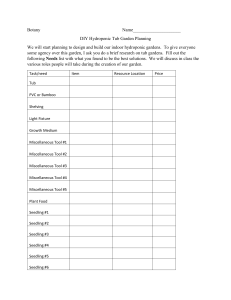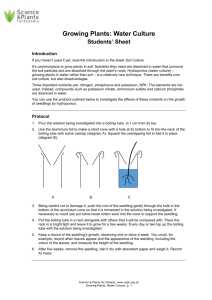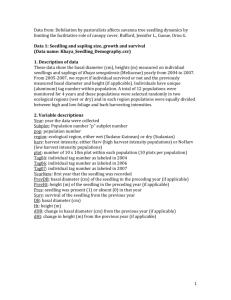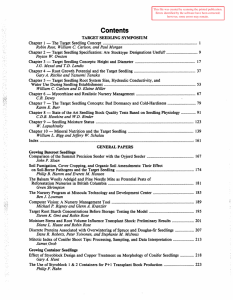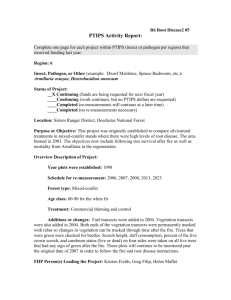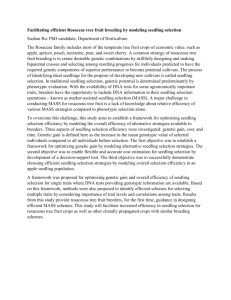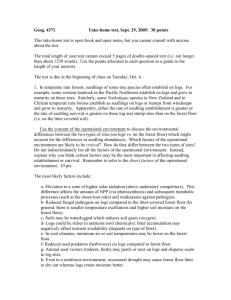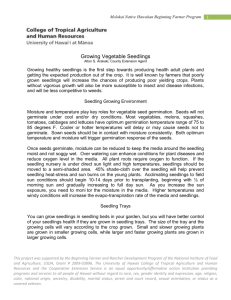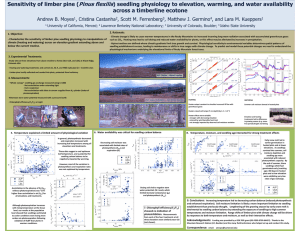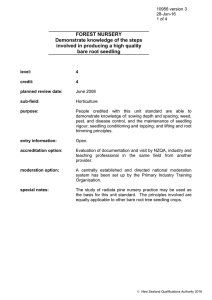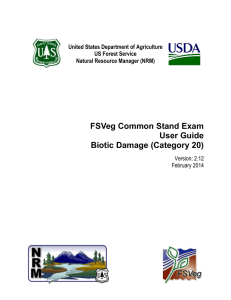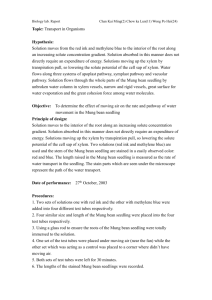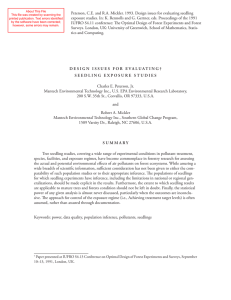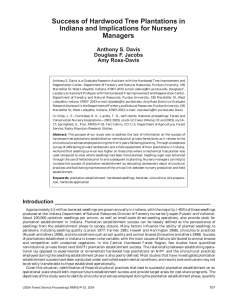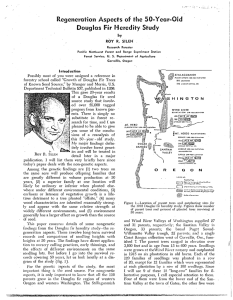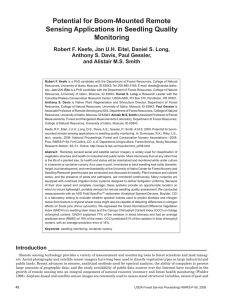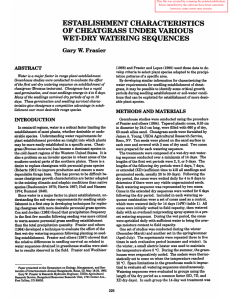Take Home Exam Test 2
advertisement
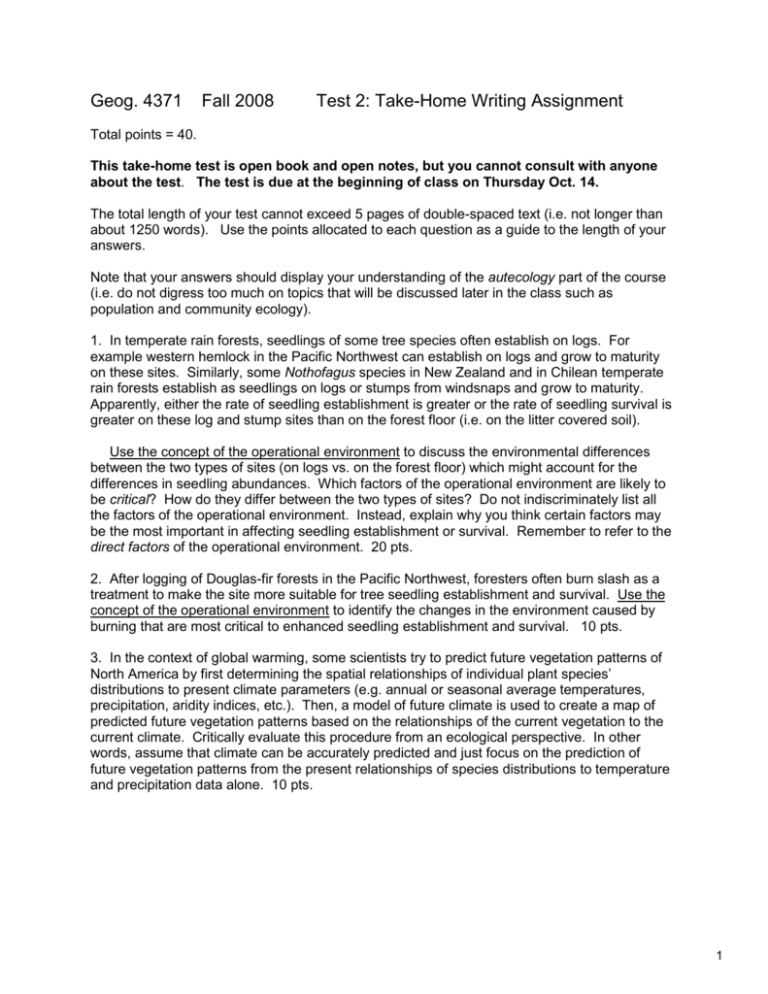
Geog. 4371 Fall 2008 Test 2: Take-Home Writing Assignment Total points = 40. This take-home test is open book and open notes, but you cannot consult with anyone about the test. The test is due at the beginning of class on Thursday Oct. 14. The total length of your test cannot exceed 5 pages of double-spaced text (i.e. not longer than about 1250 words). Use the points allocated to each question as a guide to the length of your answers. Note that your answers should display your understanding of the autecology part of the course (i.e. do not digress too much on topics that will be discussed later in the class such as population and community ecology). 1. In temperate rain forests, seedlings of some tree species often establish on logs. For example western hemlock in the Pacific Northwest can establish on logs and grow to maturity on these sites. Similarly, some Nothofagus species in New Zealand and in Chilean temperate rain forests establish as seedlings on logs or stumps from windsnaps and grow to maturity. Apparently, either the rate of seedling establishment is greater or the rate of seedling survival is greater on these log and stump sites than on the forest floor (i.e. on the litter covered soil). Use the concept of the operational environment to discuss the environmental differences between the two types of sites (on logs vs. on the forest floor) which might account for the differences in seedling abundances. Which factors of the operational environment are likely to be critical? How do they differ between the two types of sites? Do not indiscriminately list all the factors of the operational environment. Instead, explain why you think certain factors may be the most important in affecting seedling establishment or survival. Remember to refer to the direct factors of the operational environment. 20 pts. 2. After logging of Douglas-fir forests in the Pacific Northwest, foresters often burn slash as a treatment to make the site more suitable for tree seedling establishment and survival. Use the concept of the operational environment to identify the changes in the environment caused by burning that are most critical to enhanced seedling establishment and survival. 10 pts. 3. In the context of global warming, some scientists try to predict future vegetation patterns of North America by first determining the spatial relationships of individual plant species’ distributions to present climate parameters (e.g. annual or seasonal average temperatures, precipitation, aridity indices, etc.). Then, a model of future climate is used to create a map of predicted future vegetation patterns based on the relationships of the current vegetation to the current climate. Critically evaluate this procedure from an ecological perspective. In other words, assume that climate can be accurately predicted and just focus on the prediction of future vegetation patterns from the present relationships of species distributions to temperature and precipitation data alone. 10 pts. 1
